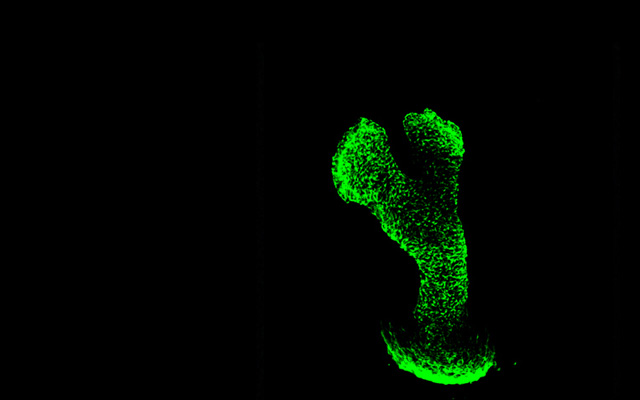mTORC1 Suppresses the Expression of Pluripotency Genes in Mouse Embryonic Stem Cells by Activating Mitochondrial Metabolism
XU Shuhui1, AHMED Tanveer2, WANG Lulu3*, QIN Baoming1,2*, XU Xueting2*
Tsc1 conditional knockout mice were used to isolate Tsc1Loxp/Loxp mESCs (mouse embryonic stem cells), which were cultured under 2iL condition. Stable Tsc1 wild-type/knockout (WT/KO) mESCs models were established by knocking out Tsc1 using AAV-Cre (adeno-associated virus Cre), with its reliability confirmed by Western blot and RT-qPCR analysis. Using this models, this study investigates the effects of hyperactivation of the mTORC1 (mechanistic target of rapamycin complex 1) on the pluripotency of mESCs. Changes in pluripotency were assessed through morphological observations, AP (alkaline phosphatase) staining, and RT-qPCR analysis of pluripotency gene expression. Mitochondrial activity was evaluated by measuring mitochondrial number, ROS (reactive oxygen species) level, and OCR (oxygen consumption rate). Rescue experiments involved treatments with the mTORC1 inhibitor rapamycin and the mitochondrial inhibitor DMM. In the mechanistic studies, the mitochondrial activator DCA was used to simulate mTORC1 hyperactivation, while the PDH (pyruvate dehydrogenase) complex inhibitor was employed for recovery experiments. The results showed that mTORC1 hyperactivation caused a shift in mESCs morphology from undifferentiated colony-like structures to flattened cells, AP staining became nearly colorless, and decreased pluripotency gene expression. Concurrently, mitochondrial number, ROS level, and OCR were elevated, indicating enhanced mitochondrial activity. Treatment with rapamycin and DMM suppressed mitochondrial activity and restored cell morphology, AP staining, and pluripotency gene expression. Further mechanistic exploration revealed that mTORC1 hyperactivation downregulated PDHE1α phosphorylation and increased PDH complex activity. DCA treatment mimicked the mTORC1 hyperactivation phenotype, suppressing pluripotency gene expression, while the PDH complex inhibitor UK5099 restored pluripotency gene expression in mESCs following mTORC1 hyperactivation. In conclusion, this study demonstrates that mTORC1 suppresses pluripotency gene expression in mESCs by upregulating mitochondrial metabolism through activation of the PDH complex.




 CN
CN EN
EN